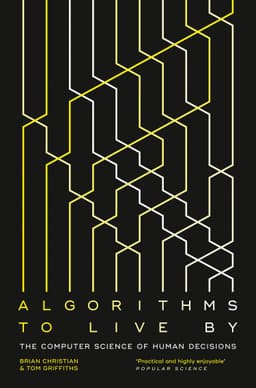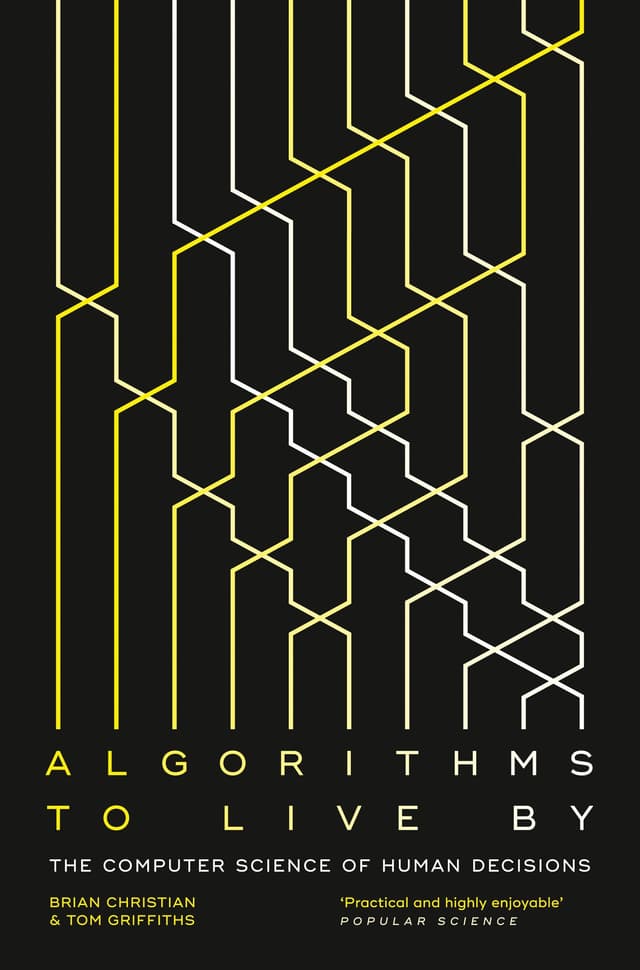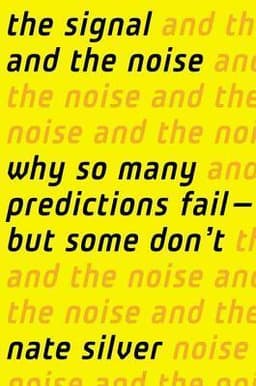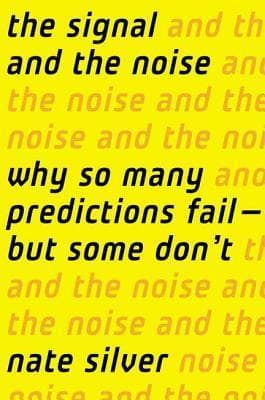
On The Edge Book Summary
The Art of Risking Everything
Book by Nate Silver
Summary
"On the Edge" takes readers on a captivating journey through the high-stakes world of poker, sports betting, and risk-taking, revealing the counterintuitive strategies and mental habits that allow gamblers and daredevils to thrive in the face of daunting odds.
Sign in to rate
Average Rating: 5
Poker Solvers Revolutionize The Game
The advent of computer solvers has revolutionized the game of poker. These AI-aided programs, developed by pioneers like Piotr Lopusiewicz, find the game theory optimal (GTO) solution for poker by running through billions of iterations. They reveal that optimal play often involves frequent randomization and mixed strategies to remain unexploitable. As a result, modern poker players devote hundreds of hours to studying solver outputs, bringing game theory into practice at an unprecedented level. While humans still maintain an edge through psychological reads and exploitative play, the technical gap between top players and computers is rapidly shrinking.
Section: 1, Chapter: 1
The Promise of Game Theory
"Poker has been around for roughly two centuries, but the vast majority of poker hands ever played by humans—probably at least 95 percent if not as much as 99 percent—have been played in the past twenty or twenty-five years."
Section: 1, Chapter: 1
Poker Players Apply Game Theory At An Unprecedented Level
Serious poker players can gain an edge by:
- Devoting significant study time to poker solver outputs to internalize game theory optimal play
- Employing mixed strategies and balanced ranges to avoid being exploited by observant opponents
- Understanding the tradeoffs between GTO and exploitative play styles based on villain tendencies
- Utilizing randomization techniques like choosing bet sizes based on the second hand of the tournament clock
- Knowing when to deviate from solver strategies to capitalize on reads and psychological factors
Section: 1, Chapter: 1
Strategic Empathy Is Key To Success In Poker
One of the most important skills for top poker players is strategic empathy - the ability to put yourself in your opponent's shoes and understand how they perceive the game state. By paying attention to subtle physical tells, betting patterns, and emotional states, elite players like Vanessa Selbst and Maria Ho gain an edge by narrowing their opponent's range and finding exploitative plays. However, this is a skill that needs to be carefully honed and applied, as making hero calls or huge bluffs based on a hunch can be disastrous without hard evidence to support a read.
Section: 1, Chapter: 2
Poker Is A Game of Incomplete Information
When making a big decision in poker, it's essential to:
- Pay attention to your opponent's physical tells and emotional states while not staring too obviously
- Consider the story your opponent is telling with their betting actions and see if it adds up
- Rely on your experiential database of poker hands to identify similar patterns and outcomes
- Give villains credit for understanding basic strategic considerations and don't assume they're making illogical plays without strong evidence
- Make peace with the fact that you'll never have complete certainty and sometimes the mathematically correct play will lose to an improbable bluff
By honing your perception skills while embracing the inherent ambiguity of poker, you'll be able to make more accurate decisions under pressure.
Section: 1, Chapter: 2
The Physical Challenges Of Playing For High Stakes
Playing poker for significant amounts of money relative to your bankroll creates an unmistakable physical response, even for seasoned professionals. Sweaty palms, pounding heartbeats, and trembling hands are common symptoms of the adrenaline rush brought on by high-pressure situations.
According to trader turned neuroscientist John Coates, author of The Hour Between Dog and Wolf, embracing this stress response is key for performing your best under pressure. Top poker players, traders, and athletes all show heightened physical responses to risk, giving them an extra gear to make perceptive choices in pivotal moments.
Section: 1, Chapter: 2
Casinos Use Data To Optimize Profits And Player Experience
Modern casinos are increasingly using data analytics and machine learning to model player behavior and optimize every aspect of their gaming floors. Pioneered by Gary Loveman, former CEO of Caesars Entertainment, casinos now employ teams of MIT-trained mathematicians and data scientists to determine everything from the optimal slot machine hold percentage to the personalized comps offered to loyal high rollers.
By tracking player activity through loyalty cards, mining behavioral data, and running experiments, mega-resorts can create a perfectly tuned ecosystem that maximizes both player satisfaction and casino winnings.
Section: 1, Chapter: 3
The Three Tiers Of The Casino Business
The casino industry can be divided into three distinct market segments:
- High-end luxury resorts: Upscale properties like the Bellagio and Wynn cater to an affluent clientele with lavish amenities, Michelin-starred restaurants, and designer shopping. Gambling is just one component of a complete entertainment experience.
- Mass market corporate casinos: Companies like MGM Resorts and Caesars Entertainment operate a broad portfolio of properties that appeal to a wide spectrum of tourists and convention-goers. Casinos use tiered loyalty programs to segment customers and offer personalized promotions.
- Locals market and slot parlors: These bare-bones operations cater to a working class clientele with minimal amenities beyond the gaming floor. Slot machines and video poker are the primary focus, and casino design principles create a maze-like environment to keep players glued to their games.
Section: 1, Chapter: 3
Advantage Players Find Edges In A Sea Of Bad Bets
While the odds are stacked against the typical casino gambler, a rare breed of advantage player seeks out profitable opportunities by:
- Identifying promotions and game variants with reduced house edges
- Pouncing on pricing mistakes, such as progressive jackpots that have reached a positive expected value threshold
- Playing unbeatable games like poker where an edge can be gained through skill
- Taking advantage of casino host incentives and loss rebates that mitigate downside risk
- Developing data-driven models for advantage play in table games and sports betting
Section: 1, Chapter: 3
Razor Thin Margins Of Professional Sports Betting
Professional sports bettors operate in an extremely efficient market, often grinding out an edge of just 2-3% on the massive amounts of money they bet. With such slim margins for error, getting money down becomes as important as handicapping games profitably.
Bettors must navigate betting limits, wager timing, market-making sportsbooks, and closing line value to extract as much expected value from their edges as possible. This unforgiving calculus has turned sports betting into a high-stakes cat-and-mouse game between top bettors looking for weaknesses in the betting market and sportsbooks looking to encourage square money while limiting their sharpest customers.
Section: 1, Chapter: 4
The Four Key Skills Of Sharp Sports Bettors
According to Ed Miller, author of The Logic of Sports Betting, elite sports bettors share four key attributes:
- Betting knowledge and familiarity with how markets operate, including concepts like hold percentage, market efficiency, and closing line value.
- Analytical and data-driven handicapping skills to build predictive models and identify pricing inefficiencies.
- Domain-specific understanding of the sport(s) they bet on, including the impact of personnel matchups, coaching strategies, and league trends.
- Networking ability and street smarts to get bets down via betting syndicates, beards, and trading intel with other top bettors.
Section: 1, Chapter: 4
Silicon Valley's Embrace of Variance and Risk-Taking
Silicon Valley's culture champions risk-taking and embracing variance, seeing them as necessary for progress and disruption. VC firms like Sequoia Capital and Andreessen Horowitz embody this spirit, targeting high potential returns even if it means many of their investments fail. This risk-tolerant mindset, driven by the potential for outsized rewards, sets Silicon Valley apart from other industries and enables it to move quickly on cutting-edge ideas.
Section: 2, Chapter: 5
The World Doesn't Care What You Majored In
A twentysomething client who built a successful career in an unrelated field from her major said: "I don't know what I want to do when they graduated. What people are doing now is usually not something that they'd even heard of in undergrad. One of my friends is a marine biologist and works at an aquarium. Another is in grad school for epidemiology. I'm in cinematography. None of us knew any of these jobs even existed when we graduated."
Section: 2, Chapter: 5
Venture Capital's Two Essential Traits - Long Time Horizon and Asymmetric Payoffs
Venture capital is a unique enterprise defined by two key characteristics:
- Very long time horizon: VCs make few decisions but live with the consequences for many years. For example, Sequoia Capital invested in Google in 1999 and still owns most of that stake nearly 25 years later.
- Asymmetric payoffs that reward big bets: While VCs can lose at most 1x their investment, the upside can be 1000x or more. Missing out on the next Google is costlier than the downside of failed investments.
This combination of patience and upside-skewed bets enables VCs to invest in bold ideas that most industries would consider too speculative.
Section: 2, Chapter: 5
The Meme Creation of Value
The 2020-21 bubble featured asset valuations completely detached from underlying fundamentals, driven by "meme creation of value." Online communities realized they could send prices soaring by coordinating to buy the same assets, even if they had little intrinsic worth. Examples include:
- GameStop stock rising from under $1B to $22B market cap in a month despite no change in business prospects, popularized on Reddit's r/wallstreetbets
- Dogecoin, a joke cryptocurrency, rising 3000x in value, fueled by the same online investor groups and Elon Musk
- This turned investing into a self-fulfilling social game - buy assets and convince others to follow suit, hoping to sell before the bubble bursts. The leaderless, decentralized nature of online communities amplified this dynamic.
Section: 2, Chapter: 6
Bitcoin Operates as a "Focal Point"
Bitcoin is the dominant cryptocurrency largely because it serves as what game theorists call a "focal point" - an option people tend to choose in the absence of communication because it seems natural or special. Bitcoin benefits from being the first and most well-known cryptocurrency.
If users want to transact seamlessly, the community needs to converge on one or a few cryptocurrencies. Any one cryptocurrency would work, but Bitcoin has the advantage of incumbency and brand recognition. This makes it the default choice and very difficult to displace, even by technically superior alternatives.
Section: 2, Chapter: 6
Skilled Gambling Is Still Gambling
The story of options trader Runbo Li illustrates how even sophisticated financial instruments can enable gambling-like behavior. Li initially made huge profits trading Nvidia stock options based on a tip from Reddit's r/wallstreetbets. However, he gave back all his gains and more when his subsequent Nvidia options trades went sour.
Though options trading requires significant skill, Li came to see it as more akin to gambling than he wanted to admit. The r/wallstreetbets forum encouraged risky bets by mostly inexperienced traders. Meanwhile, brokers like Robinhood turned options trading into an addictive gamified experience.
The myth that skillful trading could lead to easy fortunes drew Li into a destructive cycle of high-risk, high-stakes betting. He failed to recognize that even seemingly expert-recommended trades amounted to gambling with extra steps.
Section: 2, Chapter: 6
Utilitarianism - Quantifying the Unquantifiable
Utilitarianism, the moral philosophy embraced by many effective altruists, seeks to quantify nearly everything in pursuit of the greatest good for the greatest number. Examples:
- Estimating the comparative moral worth of humans vs animals by neuron count (e.g. a chicken is worth 1/300th of a human)
- Reducing trolley problem thought experiments to numeric costs and benefits (e.g. allowing a child to drown to avoid ruining an expensive suit)
- Calculating the dollar value of a human life based on risk-reward tradeoffs people make
By transforming ethics into math, utilitarianism makes moral philosophy tractable for the quantitative thinkers drawn to effective altruism.
Section: 2, Chapter: 7
How Utilitarianism Justifies Near-Universal Poverty
The Repugnant Conclusion, conceived by philosopher Derek Parfit, illustrates the perverse implications of unbridled utilitarianism. It compares two hypothetical worlds:
- A: The current world, but with disease, poverty, and injustice eliminated. 8 billion people enjoy a very high standard of living.
- B: A world with vastly more people (trillions or quadrillions) living lives barely above subsistence level, perhaps only briefly experiencing simple pleasures.
Utilitarianism's calculus judges World B as better because the sheer number of people outweighs their quality of life. After all, a huge number multiplied by even a tiny positive value ("utility") yields a bigger number. The Repugnant Conclusion demonstrates how utilitarianism fails to align with common moral intuitions in extreme scenarios.
Section: 2, Chapter: 7
SBF's Distorted Relationship with Risk and Ruin
Sam Bankman-Fried (SBF) had an extremely unhealthy view of risk, believing it was correct to take gambles that could cause serious damage to one's position as long as there was a small chance of a huge payoff.
SBF explicitly extended this philosophy to existential risk, telling colleagues he'd happily "flip a coin, if it came up tails and the world was destroyed, as long as if it came up heads the world would be like more than twice as good."
Combined with his utilitarianism and earning-to-give mentality, SBF's approach to risk was a recipe for unhinged, destructive decision making with no regard for downside.
Section: 2, Chapter: 8
Kelly Criterion Betting Demonstrates How Practical Risk Management Diverges From Naive Expected Value Maximization
The Kelly criterion is a formula for optimal bet sizing that maximizes long-run returns while minimizing risk of ruin. A simulation of betting on 272 NFL games in a season, using either full Kelly sizing or 5x Kelly, illustrates the tradeoffs:
- Full Kelly generates a healthy 24% average return while having only a 10% chance of losing money and a 2% chance of going broke.
- 5x Kelly produces much higher average returns, but goes broke 88% of the time. It's higher EV but with an unacceptable risk of ruin.
The exercise shows how practical risk takers need to balance expected value with sustainability. Overbetting relative to Kelly, as SBF was prone to, is a recipe for disaster. Real risk management requires resilience, not just maximizing some theoretical long-run average.
Section: 2, Chapter: 8
Revenge Is A Powerful Human Instinct
The human desire for revenge, even when self-destructive, has important implications for politics and game theory. A study found that 90% of subjects retaliated against a simulated Soviet nuclear first strike despite knowing they were dooming themselves.
This is irrational from a self-preservation standpoint but reflects that revenge is a powerful innate drive, perhaps evolutionarily adaptive for deterring aggression against one's tribe. Mutually assured destruction works because of this glitch in human reasoning.
The instinct for retaliation deters conflict but makes de-escalation difficult. Game theory's assumption of pure self-interest misses these messy human motives. Understanding them is key to anticipating others' actions, both at the poker table and in geopolitics.
Section: 2, Chapter: 8
Eliezer Yudkowsky's Extreme Pessimism About AI Risk
Eliezer Yudkowsky, a pioneer of the AI safety movement, believes humanity is almost certainly doomed by artificial intelligence. His probability of existential catastrophe from AI, or p(doom), is 99.9+%.
Yudkowsky's view is grounded in arguments like:
- The orthogonality thesis, which holds that AIs can have any combination of intelligence level and final goals, however misaligned with human values.
- Instrumental convergence, the idea that superintelligent AIs will pursue goals like self-preservation and resource acquisition as stepping stones to their final objectives, with humans as collateral damage.
- Fast takeoff, the notion that AI will recursively self-improve too rapidly for humans to correct misaligned systems before catastrophe strikes.
Section: 2, Chapter: 9
AI Transparency and the Potential Infringement on Human Agency
As AI systems become more powerful, questions arise about their transparency and the degree to which we should grant them decision-making authority. Two hypothetical scenarios illustrate the dilemmas:
- Hyper-Commodified Casino Capitalism: Imagine a future where AI is used to relentlessly optimize every interaction to extract maximum value from users. Algorithms perfectly manipulate people into behaviors that benefit corporations but erode mental health and human agency. Life feels gamified and funneled into addiction.
- Ursula's Utopia: Imagine an advanced AI that prevents any further technological development to avoid existential risk. Humanity is locked into a peaceful but stagnant existence, with the AI perhaps even culling the population to sustainable levels. Agency is curtailed in the name of stability.
Section: 2, Chapter: 9
Humanity's Gamble
"So the world finds itself at another pivot point. There was 1776, with the American Revolution, and there was the Industrial Revolution. There was 1945, with the end of World War II, and reorientation of the global order amid the emergence of the Information Age. And there is today."
Section: 2, Chapter: 9
Related Content


Algorithms To Live By Book Summary
Brian Christian
Algorithms to Live By reveals how computer algorithms can solve many of life's most vexing human problems, from finding a spouse to folding laundry, by providing a blueprint for optimizing everyday decisions through the lens of computer science.
Algorithms to Live By reveals how computer algorithms can solve many of life's most vexing human problems, from finding a spouse to folding laundry, by providing a blueprint for optimizing everyday decisions through the lens of computer science.
Computer Science
Decision Making


The Signal and the Noise Book Summary
Nate Silver
In The Signal and the Noise, Nate Silver explores the art and science of prediction, explaining what separates good forecasters from bad ones and how we can all improve our understanding of an uncertain world.
In The Signal and the Noise, Nate Silver explores the art and science of prediction, explaining what separates good forecasters from bad ones and how we can all improve our understanding of an uncertain world.
Prediction
Decision Making
Economics

